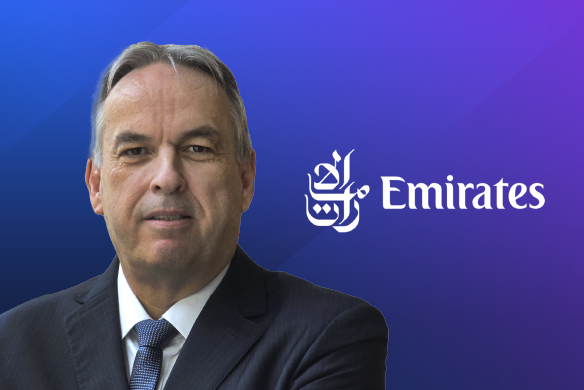Wayfair, the e-commerce giant, prides itself on helping everyone, anywhere create their feeling of home. With global headquarters and an extensive network of logistics hubs and customer service centers, Wayfair is one of the world’s largest home retailers serving over 22 million customers and powered by over 14,000 people. So we were excited to sit down with Hannah Rebecchi, Senior Manager of Talent Acquisition Technology at Wayfair to chat about their innovative approach to talent technology.
Rebecchi joined Dimitri Boylan, Avature CEO, at our conference in D.C. to discuss the evolution of technology at Wayfair. The shift from homegrown to outsourced, best-in-class solutions, the importance of design principles when implementing technology and balancing short-term demands with long-term vision are just some of the topics they touched on in this insightful conversation. So let’s jump in!
An Evolving Technology Ecosystem
Since Rebecchi joined Wayfair over five years ago, the e-commerce giant’s approach to technology has evolved significantly. While they initially leaned heavily on in-house development to create custom solutions when market options didn’t meet their requirements, they realized that the proliferation of tools can lead to inefficiencies, especially as the company continues to grow. On top of that, building software in-house requires dedication and a great number of resources, and keeping up with industry trends and providing long-term support can be challenging.
I think the big difference you get with buying software externally versus building it in-house is that long-term vision and roadmap. The level of support, the new releases and keeping features up with industry trends, doing that right in-house is really hard and takes a certain level of dedication.”
Hannah Rebecchi
Senior Manager of TA Technology, Wayfair
As such, in the spirit of continuous improvement, Wayfair has begun to explore a mix of building and buying to ensure long-term success. And Rebecchi has been playing a critical role in the transition toward technology consolidation.
Coming into Wayfair and continuing to grow our technology teams, the focus has really been how do we bring back some of those efficiencies, how do we consolidate tools where it makes sense and have a really cohesive tech stack? We’ve really made progress within the last two years specifically for our TA tech stack.”
Hannah Rebecchi
Senior Manager of TA Technology, Wayfair
Evaluating Technology and Aligning With the Business
While aligning technology choices with business objectives tends to be somewhat challenging for many organizations, Wayfair’s rapid growth required the talent acquisition (TA) technology team to determine whether their technology stack was in fact keeping pace with the business’s objectives. This need was heightened by the evident inefficiencies that were stemming from an inconsistent technology stack.
Specifically, what led us on this journey was we were just getting over-inundated as a tech team with requests and users reaching out with their pain points and things that weren’t working. And it felt like we were just patching holes on a boat.”
Hannah Rebecchi
Senior Manager of TA Technology, Wayfair
Rebecchi explained that a crucial first step in achieving consolidation was to assess whether technology was still relevant and serving its purpose. For this, considering long-term scalability, staying mindful of the constant changes in the technology market and evaluating the business needs were essential.
After a careful assessment of all these variables, Wayfair found itself at a crossroads. Though they could continue using some of the technology they had, it would eventually lead to mediocre performance and become unsustainable for the business. Specifically, their old technology didn’t allow them to scale at the pace required to keep up with the hiring demands of the business. If they didn’t upgrade their technology, they’d have to hire an expensive army of recruiters and their efforts to drive continuous improvement would become futile.
Making the Right Choice
When we went to market for a new tech stack for our high-volume population, we market-mapped over 30 different vendors. Really boiling that down to the final winner and really proving that business case took a lot of time.”
Rebecchi and Boylan discussed the steps Wayfair takes to ensure they are investing in the right technology. Taking the decision to sunset an internal tool in favor of something available in the market is significant. There’s a lot of pressure to make the right choice and, as Boylan explained, it’s tricky to cut through the noise and figure out what solution will serve you best.
With so many different, new technologies coming out with so much venture money behind them, I think it can be difficult for some of our customers to cut through that noise and boil it down to what really impacts their business.”
Dimitri Boylan
Avature CEO
Rebecchi highlighted some key things she and her team keep in mind to ensure they are moving in the right direction:
- User-centric approach: Design principles are crucial in technology selection, focusing on user personas, experiences and industry trends. Understanding end users’ pain points and future needs is central to the decision-making process.
When we finally realized that we couldn’t continue to operate this way, we went to our end users internally and externally in both formal end-user research sessions and informal interviews.”
Hannah Rebecchi
Senior Manager of TA Technology, Wayfair
- Scalability and future vision: When evaluating technology solutions, considering scalability is essential. Ensuring that the technology can grow with the organization’s future needs is a key factor in decision-making.
- Documentation and role ownership: Clear documentation and role ownership in technology projects are vital to avoid confusion and to ensure that decisions are based on clear objectives. In this sense, Rebecchi highlights the importance of documenting the decisions that are being made and why they are being made, as well as the impact of those decisions.
We estimate that our customers spend at least $250,000 just to make the decision of what product to buy. When you add in all the time that they spend bringing in resources, whether billable or not billable, it’s the same thing, it still has a cost to the company.”
Dimitri Boylan
Avature CEO
Given the significant investment technology decisions represent for enterprise organizations, establishing a well-oiled process that sets your organization up for success when making these kinds of decisions is paramount. And Rebecchi cautioned against a common trap that organizations can fall into.
You’re looking at the technology that you have and it doesn’t serve you anymore. And then you see this shiny new thing and quickly jump to it, thinking that it’s going to solve all your problems, make you more efficient and make your end users happier. But it’s not a silver bullet in most cases. But it’s hard not to fall into that trap.”
Hannah Rebecchi
Senior Manager of TA Technology, Wayfair
Balancing Short-term Needs With Long-term Vision
In high-growth companies like Wayfair, balancing the need for rapid solutions with a long-term vision is a challenge, something that Boylan and Rebecchi discussed during this conversation. Defining a clear vision early on can be beneficial, though Rebecchi admitted that aligning that vision between HR tech and the rest of the organization can be complex.
But she also shared an effective approach that has worked well at Wayfair. Though she and her team take time to understand the pain points TA is feeling today, they try to focus the conversation on where the team would like to go: what their vision looks like, what’s holding them back now and overlaying that with industry trends to ensure they are on the right path.
This process helps them establish a benchmark and an understanding of the technology they need to go to market for to help fill those gaps. As she describes, “It’s a process of really fine-tuning. What are our core requirements, what are critical items that we need to have and what are our nice-to-have items? And then going to market.”Having a rock-solid understanding of your business needs today is essential in order to navigate your way through the technology market. But contemplating how they might evolve in the future is also critical to avoid future technology traps. And Rebecchi believes this is where her team adds the most value to the business.
I’d say the biggest opportunity to have that influence is really helping the business think about scale. We’re an organization that’s continuing to grow and we’ve grown pretty rapidly over the last several years. And for our stakeholders or our end users in the business, it’s hard for them to say, ‘Well, is this actually going to scale with us in one year, three years, five years?’”
Hannah Rebecchi
Senior Manager of TA Technology at Wayfair
So when the business comes to her and her team with proposals, Rebecchi highlighted that their focus is on asking those questions and providing insights and ideas on what technology might be coming down the line. After all, it’s their specialty. Making teams aware of what’s available and how those solutions might fit into their long-term vision, and trying to gauge their interest is where she would start.
Have you thought about what this is going to look like when you are processing 10,000 new hires, 20,000 or 100,000 new hires? Is it going to be outdated in a year? Should they start looking at chatbot functionality today for the career site?”
Hannah Rebecchi
Senior Manager of TA Technology, Wayfair
Looking to the Future
Closing up the conversation, Rebecchi shared her view that the lessons learned in talent acquisition technology can be applied to other areas of HR, emphasizing Wayfair’s commitment to continuous improvement. While admitting that cohesiveness across all HR functions is still a work in progress at Wayfair, she believes this is an exciting focus for the team in the coming year.
Back in October, Rebecchi took the stage in DC at the 2023 #AvatureUpfront US conference, sharing the impressive results that Wayfair has registered since transitioning to the Avature platform to manage its high-volume hiring. You can hear more about these noteworthy metrics from Rebecchi herself here.



